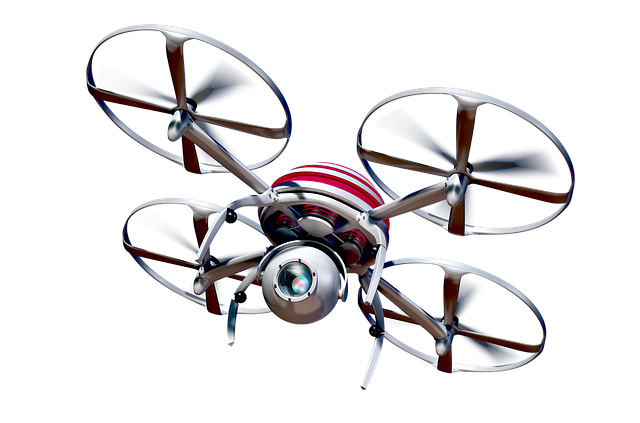Digital Twins: Virtual Models for Real-World Optimization


Are you fascinated by the idea of unlocking new possibilities and improving efficiency in various industries? Look no further than digital twins – the cutting-edge technology that is revolutionizing real-world optimization. Imagine having a virtual replica of a physical object, process, or system, allowing you to simulate, analyze, and optimize its performance. That’s precisely what digital twins offer.
So, what exactly are digital twins? Think of them as virtual doppelgangers of real-world entities. By harnessing the power of data, advanced analytics, and artificial intelligence, these digital replicas provide invaluable insights into the behavior and performance of their physical counterparts. They enable businesses to enhance decision-making, predict outcomes, and unlock new opportunities for innovation.

Digital twins find applications across diverse industries, from manufacturing and healthcare to transportation and construction. For instance, in manufacturing, companies can create digital twins of their production lines to optimize operations, identify bottlenecks, and streamline processes. By simulating different scenarios, manufacturers can reduce downtime, improve quality, and increase overall productivity.
In the healthcare sector, digital twins are making significant strides. Doctors can develop virtual models of human organs or even entire bodies, helping them better understand diseases, plan surgeries, and personalize treatment options. These virtual replicas enable healthcare professionals to optimize patient care, minimize risks, and achieve better outcomes.
Transportation is another field where digital twins are driving innovation. In the automotive industry, for example, manufacturers can create digital twins of vehicles to test safety features, fuel efficiency, and performance before physical prototypes are built. This saves time, reduces costs, and enables rapid iteration, resulting in better products hitting the market sooner.
The potential benefits of digital twins are vast. They empower businesses to make informed decisions, optimize processes, and drive innovation. By leveraging real-time data and analytics, organizations can gain a deeper understanding of their assets, systems, and operations. With this knowledge, they can identify ways to improve efficiency, reduce risks, and enhance customer experiences.
Digital twins represent a powerful tool for real-world optimization. By blending the virtual and physical realms, these virtual models enable businesses to gain insights, make data-driven decisions, and unlock new levels of performance. Whether it’s manufacturing, healthcare, transportation, or beyond, digital twins are transforming industries and shaping a more optimized future. So, embrace this remarkable technology and unlock the immense potential it holds.
Revolutionizing Industries: How Digital Twins Are Transforming Real-World Optimization
Have you ever imagined a world where machines could create virtual replicas of themselves and use them to optimize real-world operations? Well, that futuristic concept is now a reality with the advent of digital twins. These incredible technological innovations are revolutionizing industries across the globe, enabling unparalleled levels of efficiency and performance. In this article, we will explore how digital twins are transforming real-world optimization and reshaping the way businesses operate.
So, what exactly is a digital twin? Think of it as a digital counterpart or a virtual replica of a physical object, process, or system. It’s like having a clone of the real thing, but one that exists in the digital realm. By integrating sensors, data analytics, and advanced modeling techniques, digital twins can simulate and analyze the behavior and performance of their physical counterparts in real-time.
The impact of digital twins on industries is profound. Take manufacturing, for example. Traditionally, optimizing production processes required extensive trial and error, leading to time-consuming and costly iterations. With digital twins, manufacturers can simulate different scenarios and test various parameters virtually, allowing them to identify bottlenecks, streamline operations, and maximize productivity without interrupting the actual production line.
But it doesn’t stop there. Digital twins are also transforming the energy sector. By creating virtual replicas of power plants, wind farms, or even entire electricity grids, energy companies can optimize energy generation and distribution. They can monitor performance, predict maintenance needs, and identify potential failures before they occur. This proactive approach not only improves operational efficiency but also enhances safety and reduces downtime.
The benefits of digital twins extend beyond manufacturing and energy. In healthcare, for instance, doctors can use digital twins to personalize treatment plans by simulating the effects of different medications on a patient’s virtual replica. This enables precise adjustments and minimizes the risk of adverse reactions. Similarly, in smart cities, digital twins can optimize traffic flow, enhance urban planning, and even predict the impact of new infrastructure projects.

Digital twins are revolutionizing industries by enabling real-world optimization in ways never thought possible. From manufacturing to healthcare and beyond, these virtual replicas are transforming the way businesses operate, improving efficiency, reducing costs, and enhancing decision-making processes. As the technology continues to advance, we can expect digital twins to play an even more significant role in shaping our future, ushering in a new era of innovation and optimization.
Unlocking Efficiency: Exploring the Power of Digital Twins in Industrial Processes

Imagine having a virtual replica of an entire industrial process at your fingertips – every detail, every component, and every interaction, perfectly simulated and accessible on a digital platform. This is where the transformative power of digital twins comes into play. In this article, we delve into the concept of digital twins and how they are revolutionizing industrial processes, unlocking new levels of efficiency and productivity.
So, what exactly are digital twins? Think of them as a bridge between the physical and digital worlds, a virtual counterpart of a real-world process or system. By leveraging advanced technologies like Internet of Things (IoT), artificial intelligence (AI), and big data analytics, digital twins simulate the behavior and performance of their physical counterparts in real-time, providing valuable insights and facilitating predictive maintenance.
The benefits of digital twins in industrial processes are immense. Firstly, they enable comprehensive monitoring and analysis of operations. With real-time data streaming from sensors embedded in machinery, equipment, and infrastructure, managers can gain a deep understanding of performance metrics, identify bottlenecks, and detect anomalies early on. This proactive approach allows for timely intervention, minimizing downtime and maximizing productivity.
Secondly, digital twins empower decision-making by offering a virtual sandbox for testing and experimentation. Manufacturers can explore different scenarios, simulate changes in variables, and assess their impact on the overall process. This not only optimizes existing operations but also aids in the design and development of new products and systems. With digital twins, companies can shorten the product development cycle and reduce costs associated with physical prototypes.
Furthermore, digital twins facilitate predictive maintenance strategies. By continuously monitoring the condition of assets, analyzing historical data, and employing machine learning algorithms, potential failures can be predicted before they occur. This enables proactive maintenance, reducing unplanned downtime, minimizing repair costs, and extending the lifespan of equipment.
From Concept to Execution: How Digital Twins Drive Innovation and Optimization
Introduction:
Have you ever wondered how organizations achieve innovation and optimization in today’s fast-paced digital era? Enter the world of digital twins, a groundbreaking technology that is revolutionizing various industries. In this article, we’ll delve into the concept of digital twins and explore how they drive innovation and optimization from start to finish.

Understanding Digital Twins:
So, what exactly are digital twins? Imagine having a virtual replica or a mirror image of a physical object, process, or system. That’s precisely what a digital twin is—an advanced virtual model that simulates and emulates real-world assets, enabling deep insights, analysis, and predictions. By connecting the physical and digital realms, digital twins offer a wealth of opportunities for innovation and optimization.
From Conceptualization to Design:
The journey of a digital twin begins with conceptualization and design. Engineers and experts work hand-in-hand to create a digital representation of the physical asset, incorporating its characteristics, behavior, and functionalities. This process involves utilizing cutting-edge technologies like 3D modeling, data integration, and sensor networks to ensure an accurate and realistic digital twin.
Real-Time Monitoring and Analysis:
Once the digital twin is developed, it serves as a live virtual entity that constantly monitors, collects, and analyzes real-time data from its physical counterpart. Sensors embedded within the physical asset provide a continuous stream of information, which is then fed into the digital twin for analysis. This enables organizations to gain invaluable insights into the asset’s performance, detect anomalies, and optimize its operations promptly.
Predictive Maintenance and Optimization:
One of the key benefits of digital twins is their ability to enable predictive maintenance and optimization. By leveraging machine learning algorithms and historical data, the digital twin can anticipate potential issues, identify patterns, and predict future behavior. This proactive approach allows organizations to prevent costly breakdowns, schedule maintenance more efficiently, and optimize the asset’s performance, ultimately leading to enhanced productivity and reduced downtime.
Driving Innovation Across Industries:
Digital twins have found applications in diverse industries, including manufacturing, healthcare, transportation, and energy. In manufacturing, digital twins facilitate product design, process optimization, and supply chain management. In healthcare, they aid in personalized medicine, patient monitoring, and surgical simulations. From autonomous vehicles to smart grids, digital twins are driving innovation and transforming the way we operate and interact with complex systems.
Conclusion:
The concept of digital twins has opened up new dimensions of innovation and optimization across various industries. By bridging the gap between the physical and digital worlds, digital twins provide organizations with unprecedented insights, predictive capabilities, and opportunities for improvement. As technology continues to evolve, we can expect digital twins to play an increasingly integral role in shaping a more efficient, sustainable, and interconnected future.
Harnessing the Potential: Digital Twins Redefine Precision in Manufacturing
Are you ready to witness the future of manufacturing? Prepare to be amazed as we delve into the world of digital twins, a groundbreaking technology that is revolutionizing precision in manufacturing. Imagine having an exact virtual replica of a physical object or process that can be analyzed, simulated, and optimized with remarkable accuracy. That’s precisely what digital twins offer—a virtual mirror image that brings unprecedented clarity and control to the manufacturing realm.
Digital twins open up a whole new dimension of possibilities for manufacturers. By creating a digital counterpart of a physical asset, such as a machine or production line, engineers can gain valuable insights and make informed decisions. It’s like having a crystal ball that reveals hidden inefficiencies and bottlenecks, enabling proactive measures to enhance performance and productivity.
With digital twins, manufacturers can simulate various scenarios and perform virtual experiments before implementing changes in the real world. This empowers them to optimize processes, reduce downtime, and boost overall efficiency. Need to fine-tune production parameters? Simply tweak the digital twin and observe the outcomes virtually, saving time and resources.
But the benefits don’t end there. Digital twins also play a vital role in predictive maintenance—the ability to detect and address potential issues before they escalate into costly problems. By continuously monitoring the digital twin’s performance, manufacturers can identify early warning signs, analyze patterns, and take preventive actions. This proactive approach minimizes unplanned downtime, extends equipment lifespan, and optimizes maintenance schedules.
Think of a digital twin as a virtual conductor, orchestrating the symphony of manufacturing operations. It provides real-time visibility, allowing manufacturers to monitor every aspect of their processes and make data-driven decisions. By harnessing the power of real-time analytics, companies can streamline operations, optimize resource allocation, and achieve maximum output with minimal waste.
Digital twins have emerged as a game-changer in the manufacturing industry. They redefine precision by offering unparalleled insights, simulation capabilities, and predictive maintenance. As we embrace this cutting-edge technology, manufacturers can harness its potential to unlock new levels of efficiency, productivity, and competitiveness. The era of digital twins has arrived, and it’s time for manufacturers to seize the opportunity and shape the future of precision manufacturing.




